Public art-and-science lab for the nanoscale interface of life and the artificial
Umetniski in znanstveni javni laboratorij nanomerilnih vmesnikov za živo in umetno
Stefan Doepner, Marc Dusseiller, Boštjan Leskovšek, Romie Litrell, Bengt Sjölén, Paula Pin
Lokacija / Location
Onkraj gradbišča entrance opposite of Resljeva 32/34, Ljubljana
NanoŠmano – LifeSystems | 13.9 – 25. September, 2012
With the third edition of NanoŠmano, called “LifeSystems”, we will finally dive completely into the world of the living on the nanoscale and even go outdoors to set up the temporary laboratory in a community garden, Onkraj gradbišča, in the center of Ljubjana. Typically for the field of nanoscience, after working on physical tools and nanomaterials, this time we converge with the third lab „NanoŠmano – LifeSystems“ on the interface of the living and the artificial. Traditional and deeply rooted cultural topics of agriculture, gardening and food are contrasted with novel technologies to reflect on current and future possibilties to control and engineer life itself. With these experiments, or rather collective tinkering processes, the NanoŠmano Lab refuses the usual art and science framework of collaborations and residencies; rather than an exhibition presenting only the results of tedious art and science residencies, the open process itself is experiencable, translated and graspable through hands-on engagements.
find drafted info on our wiki
Background
The NanoŠmano Labs initiated in 2010 by Stefan Doepner (f18institute/Cirkulacija 2) and Marc Dusseiller (Hackteria.org) in collaboration with Kapelica Gallery (Ljubljana, Slovenia) offer a unique model but also setting and perspective on the use of nanotechnology in interdisciplinary science, art and design projects. In these temporary, ad hoc labs artists, hackers, scientists, and the lay public meet to perform rather than simply witness nanotechnological protocols. They collectively tinker and experiment outside the professional laboratory, in a gallery (2010), in a abandoned bar (2011) or in a community garden (2012), where they manage to ignore the typical function of a gallery setting, and define a new, liminal space of interactions and exchanges across disciplines, scales and practices.
see a short documentary on NanoŠmano by artycok.tv here.
Public Program
Lab Opening: Do 13th September, 20h
InterŠmano: Sa 15th September, 21h
Joint forces of NanoŠmano – LifeSystems team and Interactivos?’12: Obsolete Technologies of the Future @ Cirkulacija2 / Tovarna Rog
NanoWalk, ŠmanoFood & LifeExchange: So 16, 15h
Expedition with invited experts and amateurs to explore Rožnik, followed by an evening of food and exchange.
Family Lab Day: Sa 22, 11h – 18h
The NanoŠmano lab opens the whole day for visiting families and kids to participate, explore and play.
11 – 13h & 16 – 18h: ‘BioSense dudu’, workshop for kids (suitable age from 5 to 13 years) by Paula Pin and the NŠ team.
During the 2 hours of the ‘dudu’ workshop the participating children will be able to explore and build an interactive system using plants and simple electronics.
Participation is limited to 10 kids for each workshop session.
Please, reserve the place at gallery@kapelica.org before 21.9
NŠ LifeSystems Workshop: Mo 24, 17 – 21h
This workshop for young adults, students and other curious people will introduce the participants into various experiments interfacing the living and the artificial. With hands-on experiments exploring the possibilities to manipulate, sense and experience this nanoscale interface.
Please, reserve the place at gallery@kapelica.org before 23.9
Finissage: Di 25 Sept, 20h
We invite you all to join us for the final evening to see, touch, hear and smell our lab for the last time, discuss with us about our experiences and explore it’s implications and reconsider the role of labs and gardens.
Who
Stefan Doepner (DE/SI)
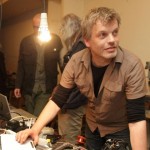 Stefan Doepner studied Painting and Experimental Film at the University of Arts Bremen. Doepner’s focus is on the artistic exploration of today’s use, reception and rules of technology, to analyze and understand contemporary systems and techniques he acquires the method of reinvention. In his work Doepner tries to profane the technological glorification and to grasp the relations of society, technology, sound, science and every day life through meditation and mediation. 1992 Doepner participated at the Documenta9 project Van Gogh TV; 1993 co-founded MAB, Bremen; 1996 co-founded f18institut, Hamburg; since 1997 on going collaborations with Stelarc; 2006 co-founded Obrat and 2007 co-founded Cirkulacija2 in Ljubljana
Stefan Doepner studied Painting and Experimental Film at the University of Arts Bremen. Doepner’s focus is on the artistic exploration of today’s use, reception and rules of technology, to analyze and understand contemporary systems and techniques he acquires the method of reinvention. In his work Doepner tries to profane the technological glorification and to grasp the relations of society, technology, sound, science and every day life through meditation and mediation. 1992 Doepner participated at the Documenta9 project Van Gogh TV; 1993 co-founded MAB, Bremen; 1996 co-founded f18institut, Hamburg; since 1997 on going collaborations with Stelarc; 2006 co-founded Obrat and 2007 co-founded Cirkulacija2 in Ljubljana
http://www.f18institut.org/; http://www.cirkulacija2.org/
Dr. Marc Dusseiller (CH)
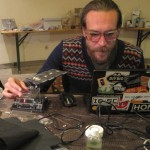 Dr. Marc R. Dusseiller is a transdisciplinary scholar, lecturer for micro- and nanotechnology (FHNW, University of Applied Sciences and Arts Northwestern Switzerland), cultural facilitator and artist. He works in an integral way to combine science, art and education. He performs DIY (do-it-yourself) workshops in lo-fi electronics, hardware hacking, microscopy, music and robotics. He was co-organizing Dock18, Room for Mediacultures, diy* festival (Zürich, Switzerland), KIBLIX 2011 (Maribor, Slovenia), workshops for artists, schools and children as the former president (2008-12) of the Swiss Mechatronic Art Society, SGMK. Currently, he is developing means to perform bio- and nanotechnology research and dissemination (Hackteria | Open Source Biological Art) in a DIY fashion in kitchens, ateliers and in developing countries.
Dr. Marc R. Dusseiller is a transdisciplinary scholar, lecturer for micro- and nanotechnology (FHNW, University of Applied Sciences and Arts Northwestern Switzerland), cultural facilitator and artist. He works in an integral way to combine science, art and education. He performs DIY (do-it-yourself) workshops in lo-fi electronics, hardware hacking, microscopy, music and robotics. He was co-organizing Dock18, Room for Mediacultures, diy* festival (Zürich, Switzerland), KIBLIX 2011 (Maribor, Slovenia), workshops for artists, schools and children as the former president (2008-12) of the Swiss Mechatronic Art Society, SGMK. Currently, he is developing means to perform bio- and nanotechnology research and dissemination (Hackteria | Open Source Biological Art) in a DIY fashion in kitchens, ateliers and in developing countries.
http://www.dusseiller.ch/labs/; http://www.hackteria.org/wordpress/
Boštjan Leskovšek (SI)
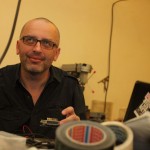 Boštjan Leskovšek is a sound artist and co-founder of Cirkulacija2. As an unstable creation he creates changes, cleans through it, falls apart by repetition and tries to create a communication with the border and limit relationship, between the fictive and real, between the place and the space.
Boštjan Leskovšek is a sound artist and co-founder of Cirkulacija2. As an unstable creation he creates changes, cleans through it, falls apart by repetition and tries to create a communication with the border and limit relationship, between the fictive and real, between the place and the space.
–
Romie Litrell (US)
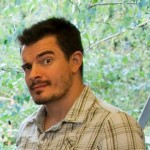 Romie Littrell is a bioartist and instructor at the UCLA Art|Sci Center. He currently develops bio and nano science-based, interactive multimedia art installations. He has engaged in a wide array of biological research including plant genetics, cornea tissue engineering, microfluidic bioreactors, and cell-chip interfaces. His current research focuses on creating non-institutional lab spaces and abstracting biological techniques to facilitate those in unrelated fields to perform advanced biology. He founded the LA Biohackers in 2010 as a space for sharing ideas and engaging in DIY biotechnology and runs workshops for high school and college students. Romie is also very interested in synthetic biology and was a grad advisor to the 2007 MIT iGEM team.
Romie Littrell is a bioartist and instructor at the UCLA Art|Sci Center. He currently develops bio and nano science-based, interactive multimedia art installations. He has engaged in a wide array of biological research including plant genetics, cornea tissue engineering, microfluidic bioreactors, and cell-chip interfaces. His current research focuses on creating non-institutional lab spaces and abstracting biological techniques to facilitate those in unrelated fields to perform advanced biology. He founded the LA Biohackers in 2010 as a space for sharing ideas and engaging in DIY biotechnology and runs workshops for high school and college students. Romie is also very interested in synthetic biology and was a grad advisor to the 2007 MIT iGEM team.
http://www.biohackers.la/
Bengt Sjölén (SE)
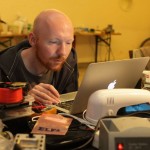 Bengt Sjölén is an independent software and hardware designer/hacker/artist based in Stockholm with roots in the home computer demo scene. He is not part of one single group but rather collaborates with several networks. He mainly works in the areas of media art, science, sound, visuals, architecture and technology.
Bengt Sjölén is an independent software and hardware designer/hacker/artist based in Stockholm with roots in the home computer demo scene. He is not part of one single group but rather collaborates with several networks. He mainly works in the areas of media art, science, sound, visuals, architecture and technology.
–
Paula Pin (ES)
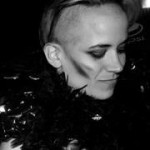 Paula Pin is an artist and investigator. Graduated in Fine Arts from Barcelona and Sao Paolo, her work ranges from abstract video to circuit bending to investigations at the frontiers of biology,cybernetics and queer science. Her performance piece Medusa from 2010 mixes mythology, ecology and criticism of consumer culture while Udre from 2009, is an automatic drawing machine created from an old umbrella and an Arduino. In 2011 she was awarded a grant from Vida to develop her Photosinthetik Symphony – data from sensores attached to plants and her own body generate sound in a program created in Pure Data. In 2012 she was invited to a residence in Nuvem, a rural art centre in Brasil, to develop her work, focussing especially on photosynthesis. In parallel she creates home made synthesisers, gives workshops, and investigates the practise of noise. The work of Paula Pin blurs the distinctions between machine, animal and plant, and opens up new horizons in the performance of the lab.
Paula Pin is an artist and investigator. Graduated in Fine Arts from Barcelona and Sao Paolo, her work ranges from abstract video to circuit bending to investigations at the frontiers of biology,cybernetics and queer science. Her performance piece Medusa from 2010 mixes mythology, ecology and criticism of consumer culture while Udre from 2009, is an automatic drawing machine created from an old umbrella and an Arduino. In 2011 she was awarded a grant from Vida to develop her Photosinthetik Symphony – data from sensores attached to plants and her own body generate sound in a program created in Pure Data. In 2012 she was invited to a residence in Nuvem, a rural art centre in Brasil, to develop her work, focussing especially on photosynthesis. In parallel she creates home made synthesisers, gives workshops, and investigates the practise of noise. The work of Paula Pin blurs the distinctions between machine, animal and plant, and opens up new horizons in the performance of the lab.
http://paulapin.com/; http://biosensing.tumblr.com/; http://transnoise.tumblr.com/
Acknowledgements
Thanks go to Prof. Dr. Peter Walde for giving us some samples of lipid molecules and tips to create giant unilamenar vesicles; to Dr. Denisa Kera for help with texts and contextualizing our NanoŠmano approach; to all the people from lifepatch.org, Akbar, Timbil, Keker et al for showing me around in the fields around Yogya; to Dr. Samuel Sanchez Ordonez for providing the artificial nanomachinges aka tubular nano-rockets; and maybe you?
Partners
Kapelica Gallery, f18institut, dusjagr labs, hackteria, Cirkulacija2, KUD Obrat
Support
Project is supported by Ministry of Culture of the Republic of Slovenia, Municipality of Ljubljana – Cultural Department, Pro Helvetia, KulturRaumSH, SOU in Ljubljana.
Workshops are part of BioTehna project, supported by a grant from Switzerland through the Swiss Contribution to the enlarged European Union and by EC 7th Framework Programme (KiiCS).
Impressions
From NanoŠmano – LifeSystems, posted by Marc Dusseiller Dusjagr on 9/06/2012 (8 items)
- Onkraj gradbišča
- Mhhhh, there is some bees…
- Stefan Doepner checking the construction of the temporary NanoŠmano lab
- Every lab needs a roof!
- The temporary NanoŠmano lab
- Marc Dusseiller Dusjagr and Stefan Doepner trying to fix the roof.
- Naaaaiiice! Protection from rain, step 1… done!
- How to start a NanoŠmano lab: * organize a ladder * make a roof * install a door * g…
Generated by Facebook Photo Fetcher











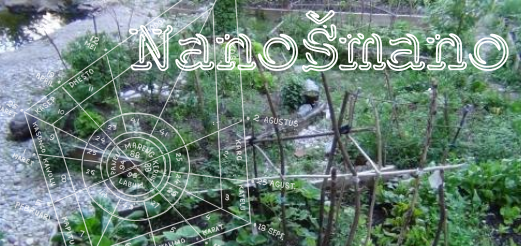











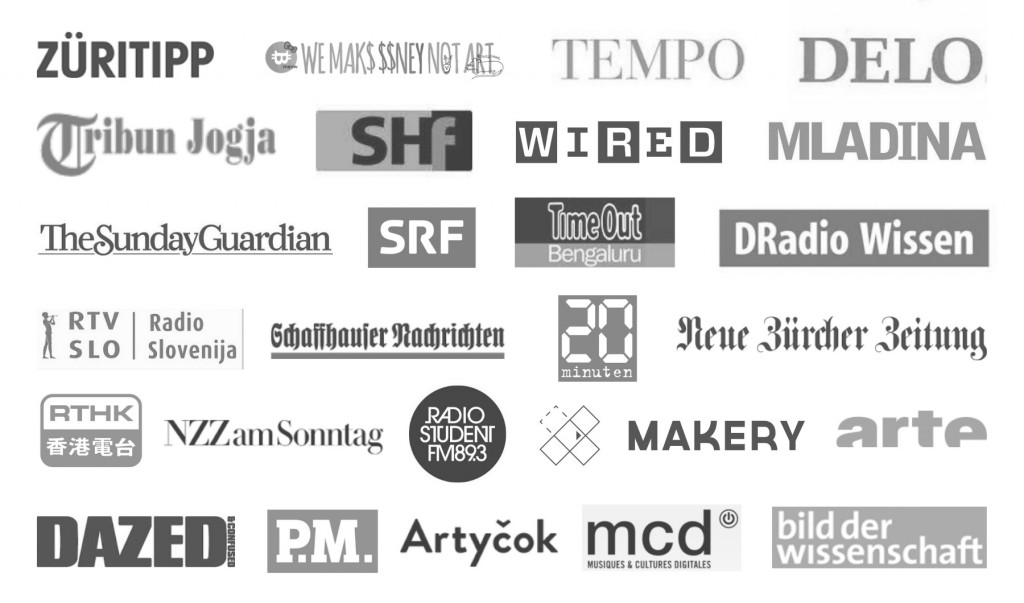
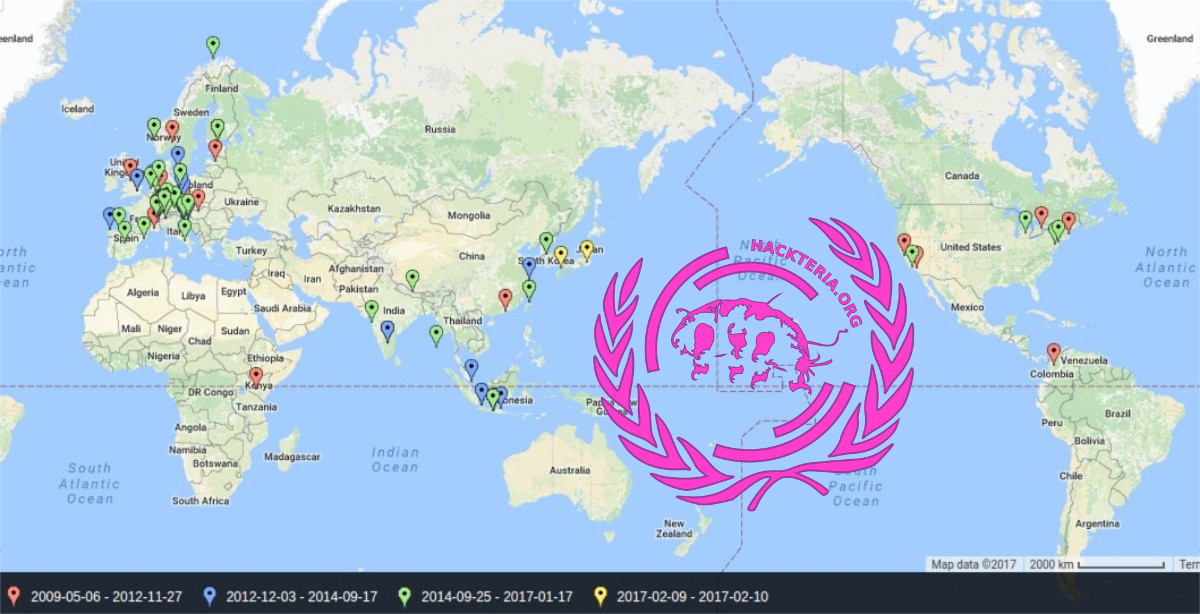

[…] Med 13. in 25. septembrom se bo v začasnem laboratoriju sredi vrtov Onkraj gradbišča odvila tretja edicija projekta ‘NanoŠmano’, z naslovom Živi sistemi. Gre za odprto raziskovalno-razvojno in predstavitveno platformo, v okviru katere bodo udeleženi umetniki, hekerji in znanstveniki skozi kreativne procese interdisciplinarnega sodelovanja tematizirali področje nanotehnologij in živih sistemov. Tekom projekta bo organiziranih več dogodkov (predstavitve, ekskurzija ter delavnice za otroke in mladostnike), ki bodo obiskovalcem omogočili, da se neposredno in izkustveno srečajo s svetom nanotehnologij in vstopijo v živi svet najmanjšega merila. Interdisciplinarni projekt NanoŠmano sta leta 2010 s podporo Galerije Kapelica iniciirala Stefan Doepner (f18institute/Cirkulacija 2/Obrat) in Marc Dusseiller (Hackteria.org). Program – četrtek, 13. 9. 2012 ob 20.00: otvoritev laboratorija – nedelja, 16. 9. 2012 ob 15.00: NanoSprehod, ŠmanoHrana & ŽivaIzmenjava: sprehod na Rožnik s povabljenimi strokovnjaki in ljubiteljskimi raziskovalci narave; sprehodu sledi večerja in pogovor v laboratoriju. Zbirno mesto bo najavljeno naknadno. – sobota, 22. 9. 2012 od 11.00 do 18.00: družinski laboratorijski dan & otroška delavnica: 11.00-13.00 in 16.00-18.00 – ponedeljek, 24. 9. 2012 od 17.00 do 21.00: delavnica za mladostnike – torek, 25. 9. 2012 ob 20.00: zatvoritev Podrobnejši program in predstavitev. […]
[…] NanoŠmano – LifeSystems / ŽiviSistemi […]
[…] NanoŠmano – LifeSystems / ŽiviSistemi […]
[…] life-forms, fungi and other biomaterials for sound and visual experimentation during the NanoSmano sessions in Ljubljana. […]
[…] dusjagr’s interdisciplinary works as a researcher, how he got involved in Slovenia through NanoŠmano, KIBLIX 2011 and BioTehna, and also the more recent activities on urban ecologies meets […]
[…] life-forms, fungi and other biomaterials for sound and visual experimentation during the NanoSmano sessions in […]